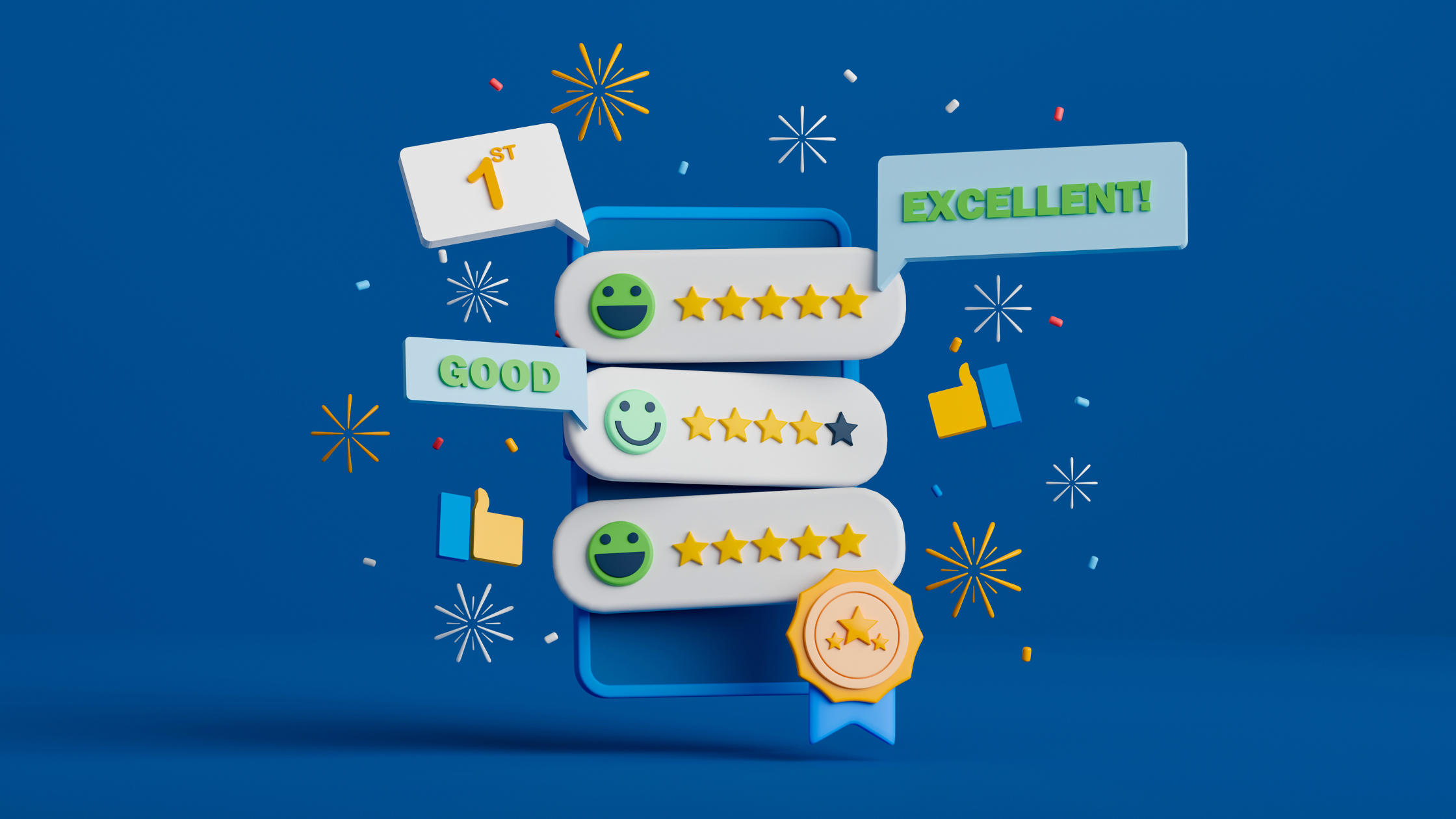Speed Doesn’t Equal Success: The Limitations of AHT as a KPI

In today's competitive and saturated marketplace, businesses are constantly looking for ways to optimize processes, boost efficiencies, and get a leg up on their competition. With an abundance of options for the everyday consumer, brands are challenged to not only attract but also retain dedicated customers. While top-notch products and services remain vital, the spotlight in recent years has undeniably shifted to the customer experience as a pivotal factor distinguishing one brand from another. In an age where products and services are often similar, it's the memorable and positive interactions that truly distinguish one brand from another.
To illustrate, 64% of customers are more likely to endorse a brand to others based on high-quality experiences. Yet, if faced with a subpar experience, 58% will not only sever their relationship with your business but also turn to your competitors. Moreover, businesses that focus on the customer experience are 60% more profitable than those that neglect it.

With the importance of the customer experience at the forefront, the pressing question becomes: How can you gauge the quality of your customer service? More directly what KPI's are important to track and monitor. There will always be debate about what the most effective metrics to measure the success of a service organization are. With contenders like customer satisfaction, net promoter score, and customer effort score in the mix, finding a definitive answer remains elusive. However, we can confidently tell you that Average Handle Time (AHT) is not one of them. Average Handle Time (AHT) is a widely used Key Performance Indicator (KPI) in customer service, particularly in call centers, to measure the average duration taken by an agent to resolve customer issues. It has been seen as critical metric as it can impact customer satisfaction and operational efficiency. Here are the aspects that typically contribute to Average Handle Time:
Talk Time: The actual time spent talking to the customer.
Hold Time: The total time a customer spends on hold during the interaction.
After-Call Work: The time spent by the agent on follow-up tasks after the call has ended, like updating customer records, sending emails, and completing other administrative tasks.
Formula for AHT
AHT = ( All Talk Time + Hold Time + After-Call Work) / Total Number of Calls Handled
For decades, AHT has been a staple in the world of telecommunication and customer service with 66% of customers still addressing concerns with a company over the phone. Understanding that service units typically drive up costs in many firms, management often turns to AHT to manage workforce numbers and control expenses. Consequently, this metric often dominates a service representative's evaluation and it is not uncommon for low AHT's for agents to be rewarded. While AHT emphasizes speed and efficiency, modern consumers prioritize a personalized, comprehensive, and solution-driven approach.
Relying heavily on AHT can inadvertently promote rushed interactions, potentially leaving customer issues unresolved or customers feeling undervalued. As businesses shift towards building lasting customer relationships and ensuring repeat business, the focus has moved to metrics that gauge customer satisfaction, loyalty, and overall experience rather than just the brevity of the interaction. It's now widely understood that an organization's long-term success hinges on the quality of its customer interactions, not merely their duration. Let’s delve into some of the reasons why it may not be a good idea to prioritize AHT in customer service.
1. Sacrificing Quality for Quantity: When agents are pressured to lower their AHT, they might rush through calls, focusing more on ending them quickly rather than actually solving the customer's problem. This can lead to unresolved issues, forcing customers to call back multiple times. Overemphasizing AHT can lead to decreased first call resolution rates and lower customer satisfaction. Moreover, a brand that provides unsatisfactory experiences can suffer a tarnished public image. Beyond just reputation, the quality of the experiences you offer can have a substantial effect on revenue.
2. Discouraging Personalized Service: Customers want to feel valued and understood. If agents are constantly checking the clock, they are less likely to engage in a meaningful conversation, ask probing questions, or personalize the service experience. Harvard Business Review found that a major source of irritation for customers is the perception that they are being addressed in an impersonal, mechanical manner. They feel the representative is hastening to end the call instead of dedicating the necessary time to ensure their problem is fully addressed. A shorter call doesn’t necessarily mean a better call.
3. Culture Killer: A shorter AHT might suggest that agents are efficient, but what if they're just following the script and not actually addressing concerns? How are they conveying your brand's message and providing a great customer experience. Top-tier companies have recognized that they achieve superior outcomes when they empower their service representatives to use more discretion in customer engagements. These firms aren't leaving their representatives to navigate issues independently; they're promoting a collaborative problem-solving approach. Research from Harvard Business Review found that a mere 9% of representatives reported operating in such a setting. However, those within it experienced compelling outcomes, outperforming their peers by 50% in terms of productivity and customer satisfaction compared to the typical contact center.
4. Missing the Bigger Picture: Tony Hsieh, the late CEO of Zappos known for going to extremes for his customers, found that on average, customers telephone at least once at some point, and if they handle the call well, they have an opportunity to create an emotional impact and a lasting memory. Rather than conforming to the industry standard of measuring “average handle time,” which pressured representatives to prioritize the quantity of calls over quality, Hsieh encouraged an atmosphere where customer representatives were free from the constraints of time and scripted responses.
Zappos' focus was solely on delivering exceptional, personalized customer service. Representatives were not held accountable for the length of their calls—one noteworthy interaction lasted almost six hours as a customer browsed thousands of shoe options. This approach, valuing meaningful interactions over upselling and swift resolutions, enabled representatives to form genuine, emotional connections with customers, referred to as a PEC (Personal Emotional Connection). When looking at all the data, Hsieh’s innovative approach to customer service revealed that AHT was not negatively impacted by taking the lid off talk time.
5. Not All Calls Are Created Equal: Some issues are naturally more complex and time-consuming than others. A strict focus on AHT does not account for the natural variability in call types. Punishing agents for longer handle times can be unfair, especially if they are dealing with intricate or sensitive issues.
While Average Handle Time once stood as a beacon of efficiency in customer service metrics, its days as a leading KPI have waned in the face of evolving consumer expectations. As businesses today strive to foster meaningful connections and ensure repeat patronage, a shift towards more holistic and customer-centric metrics is imperative. It's time for organizations to move beyond mere speed and embrace a comprehensive approach, ensuring that every interaction adds value to the customer journey. After all, in the age of the discerning consumer, it's the depth and quality of service that truly sets brands apart.
At VIPdesk, we've always been at the forefront of reimagining customer service, and we recognize that Average Handle Time (AHT) as a KPI has become outdated in today's dynamic environment. Rather than emphasizing the duration of interactions, we prioritize the quality, depth, and resonance of each engagement with a goal to maximize the first call resolution (FCR) rate. Our commitment is to a personalized, solution-driven approach, ensuring that every customer feels seen, heard, and valued. In an era where brand loyalty is shaped by the quality of experiences delivered, VIPdesk remains dedicated to going beyond transactional metrics, instead championing genuine connections that create lasting brand-customer relationships.


